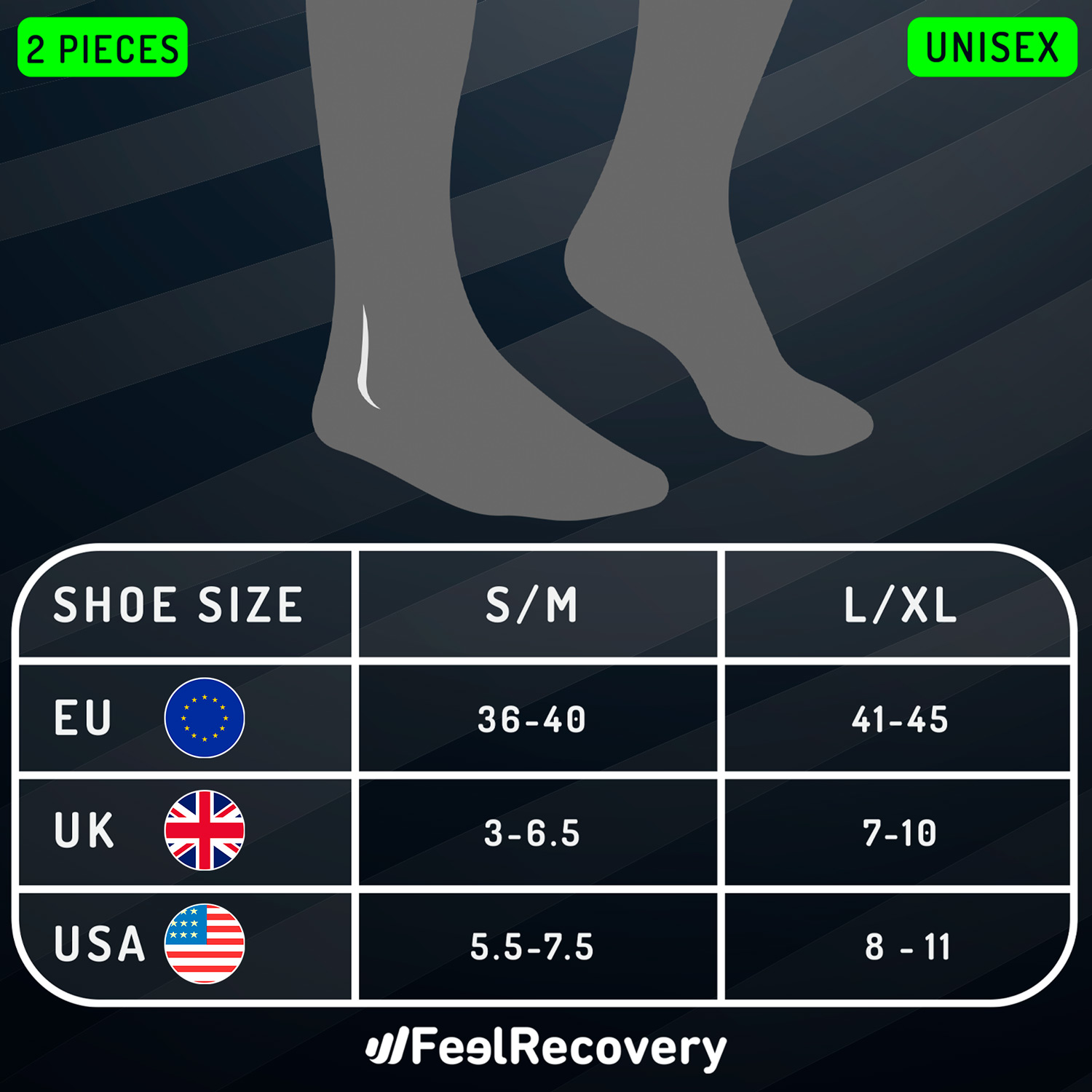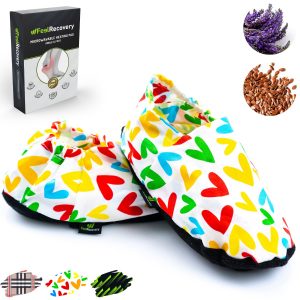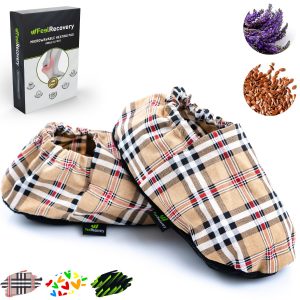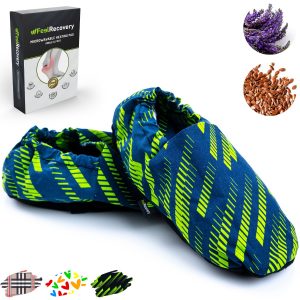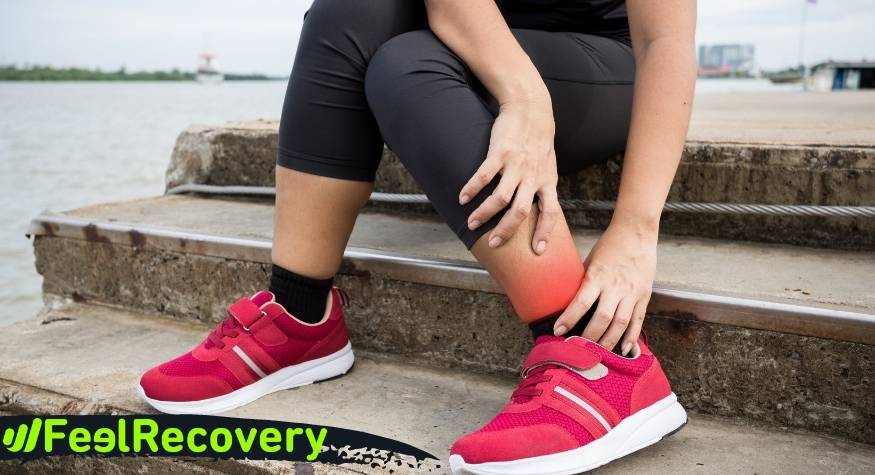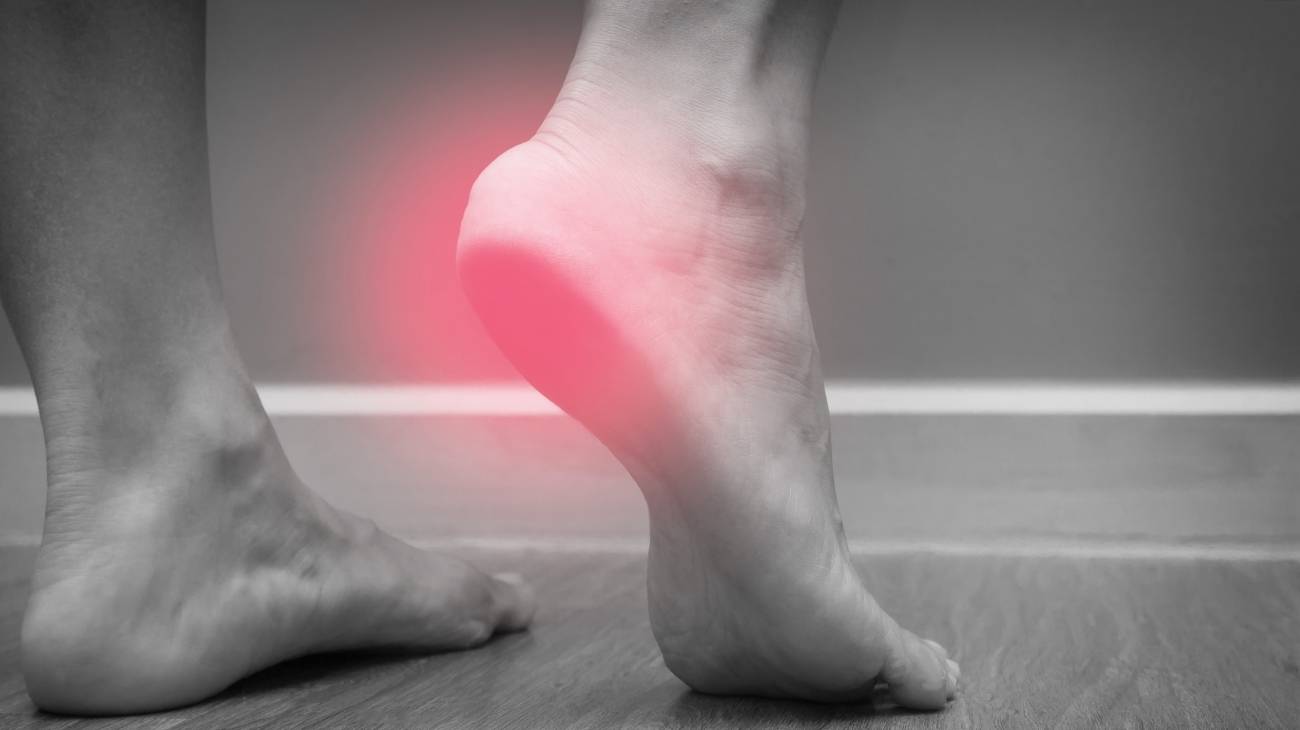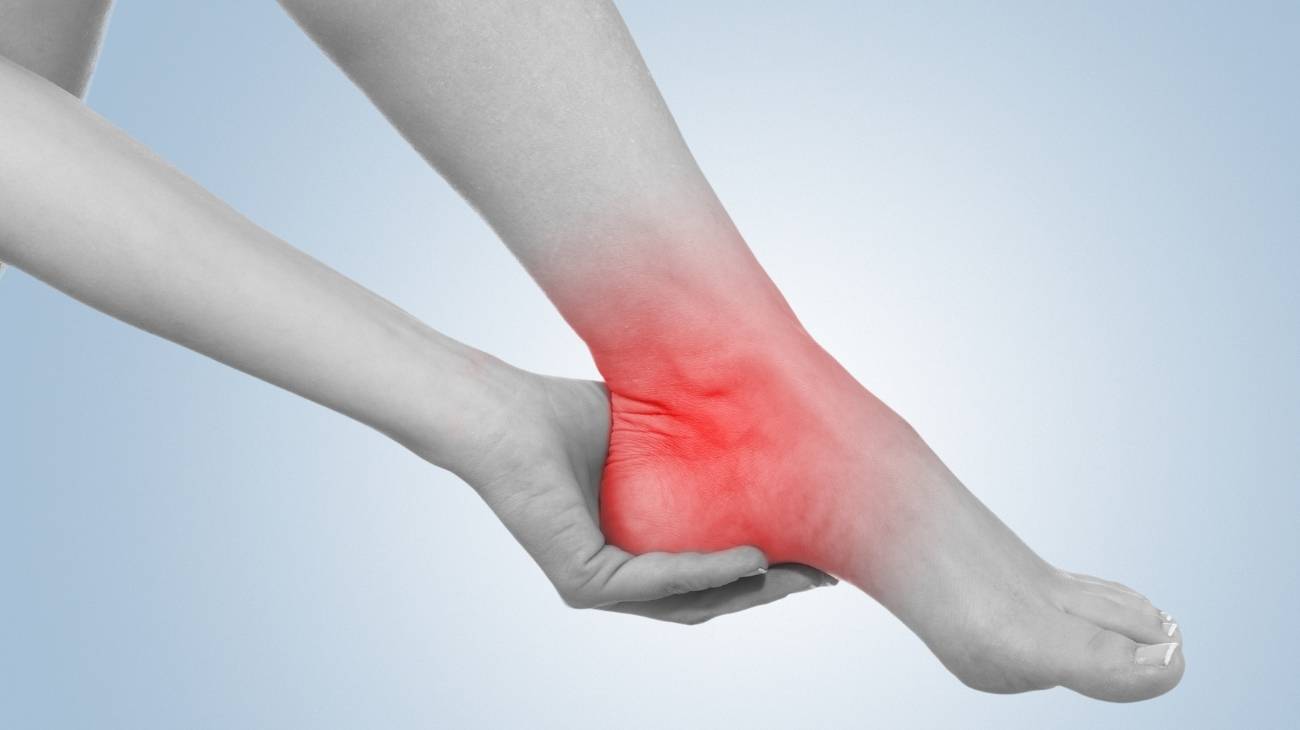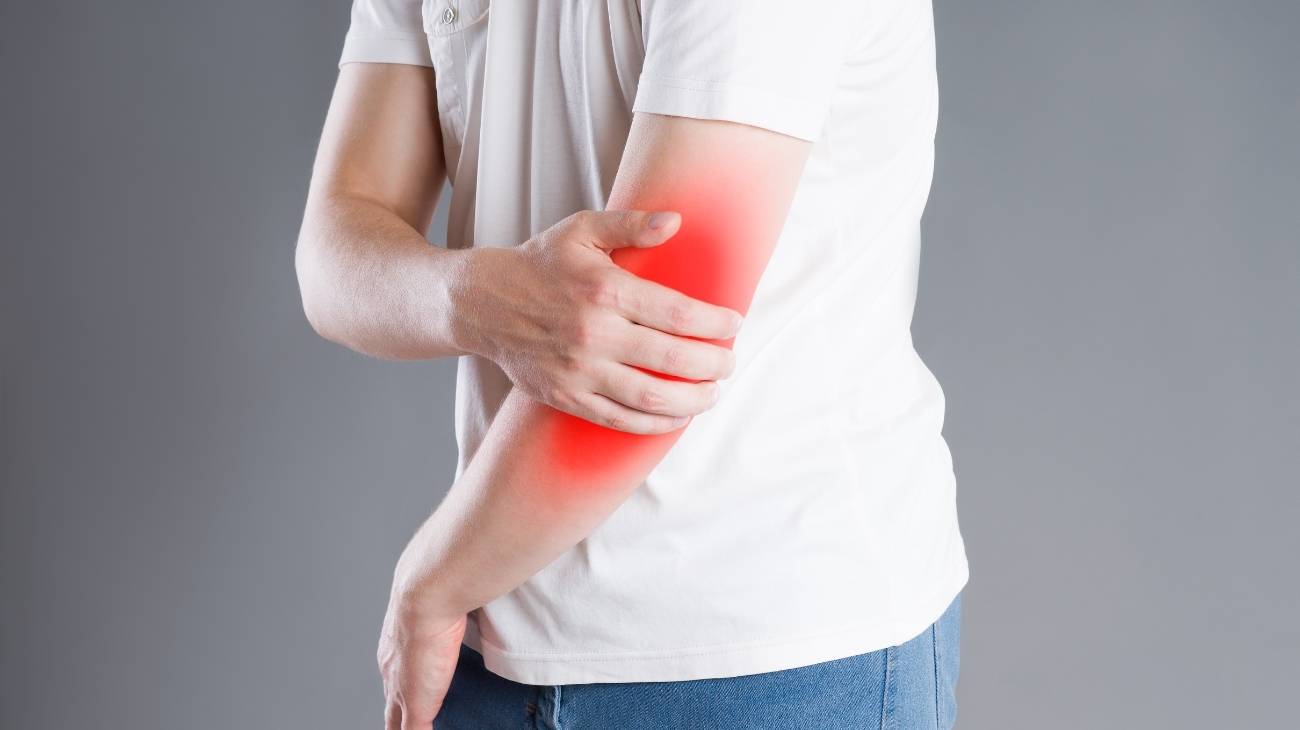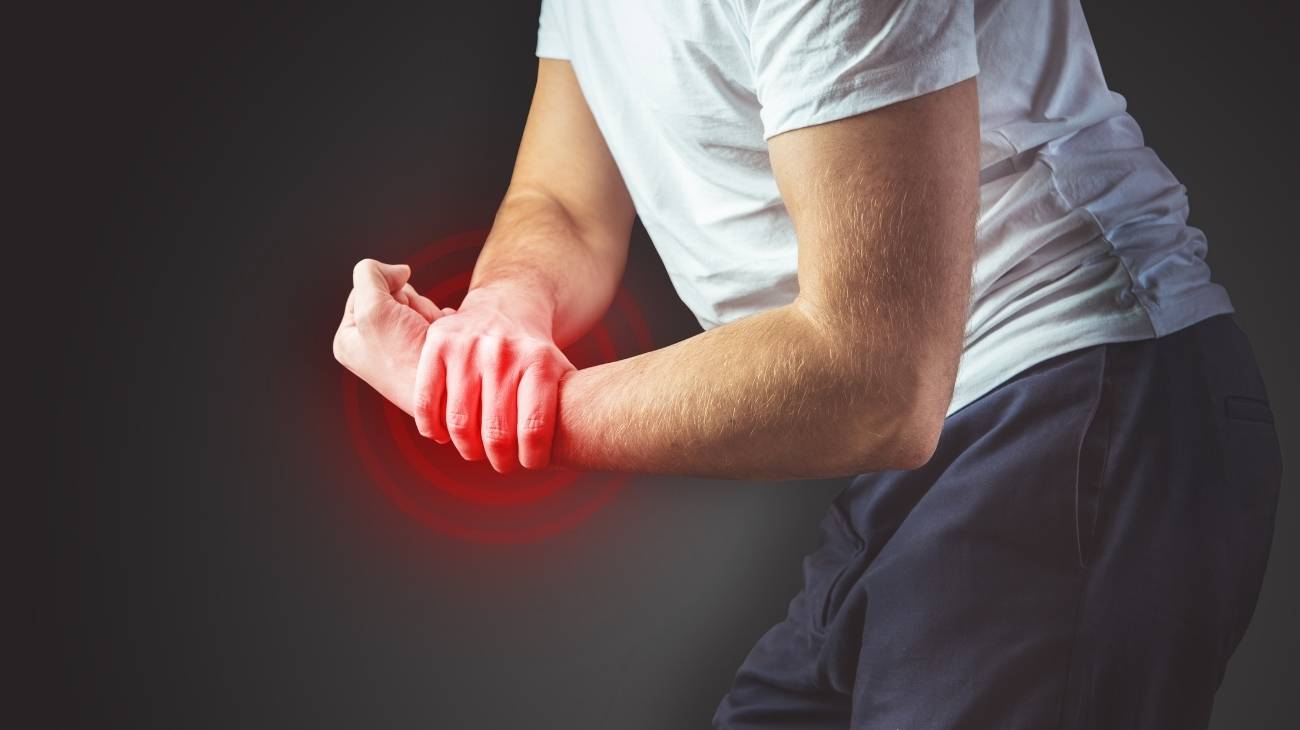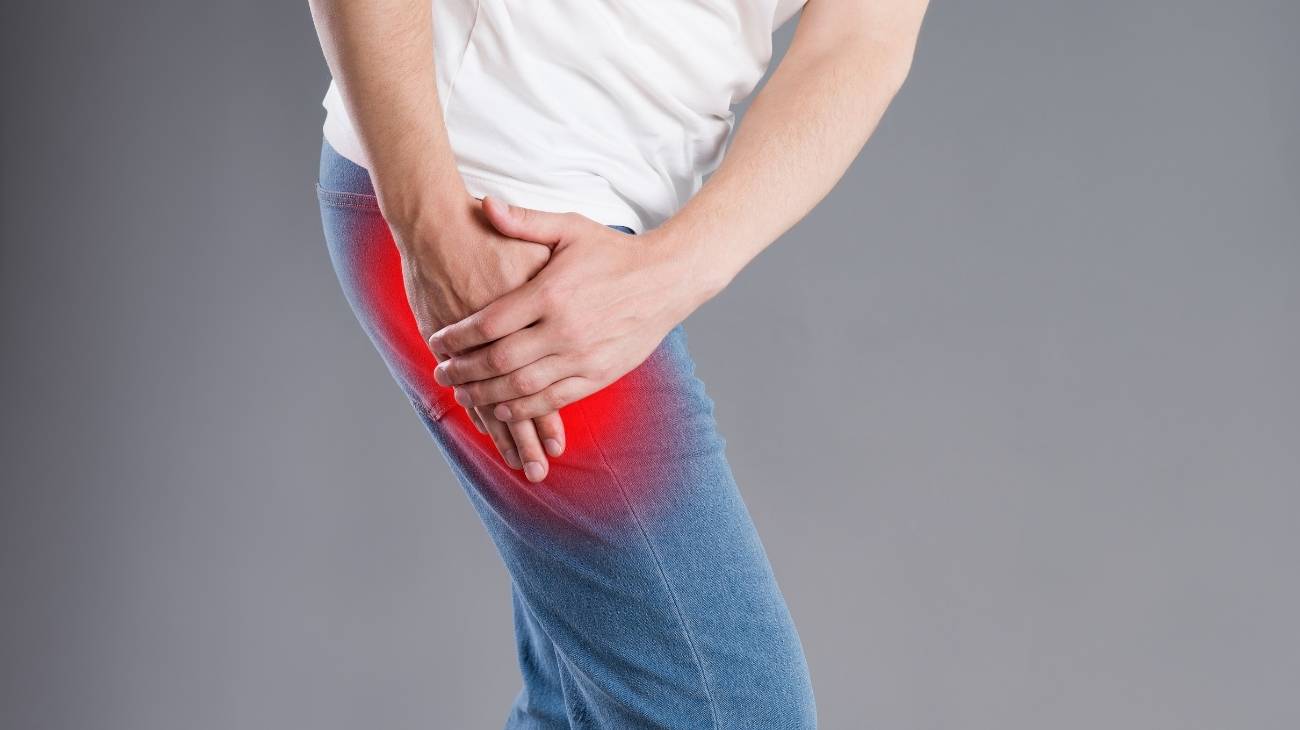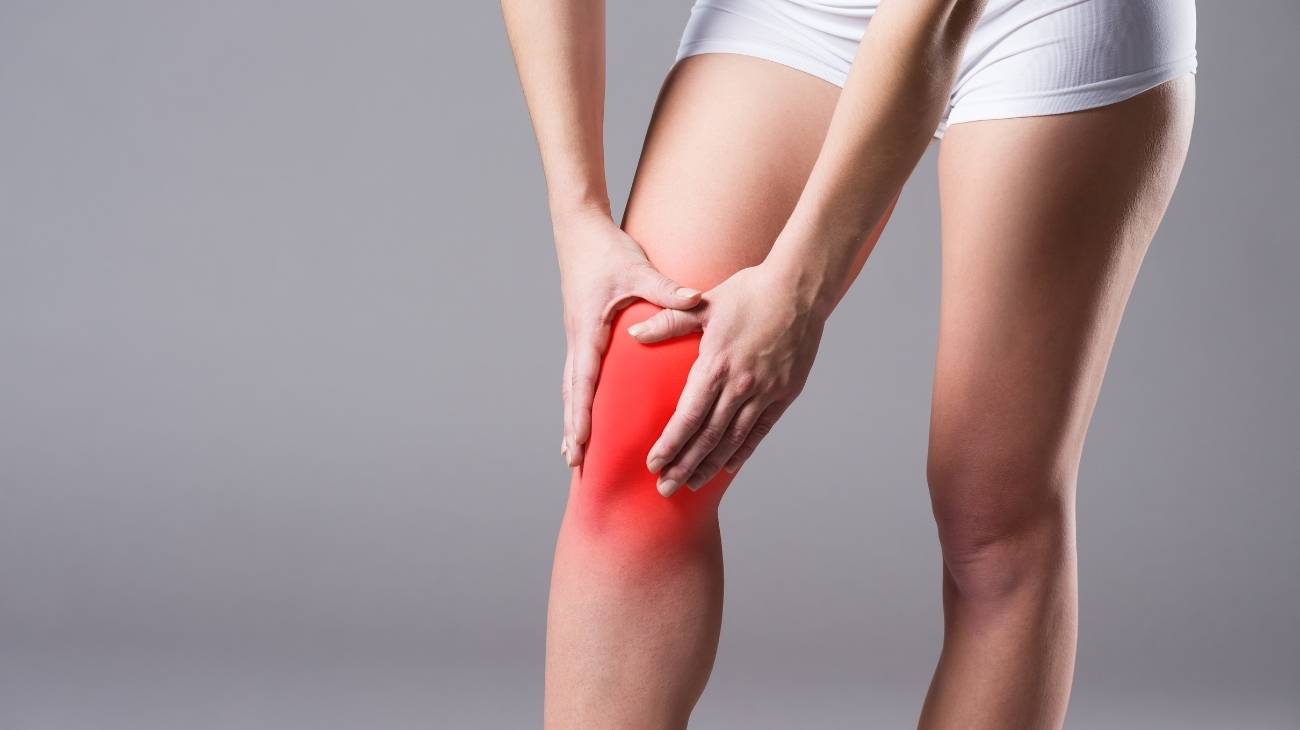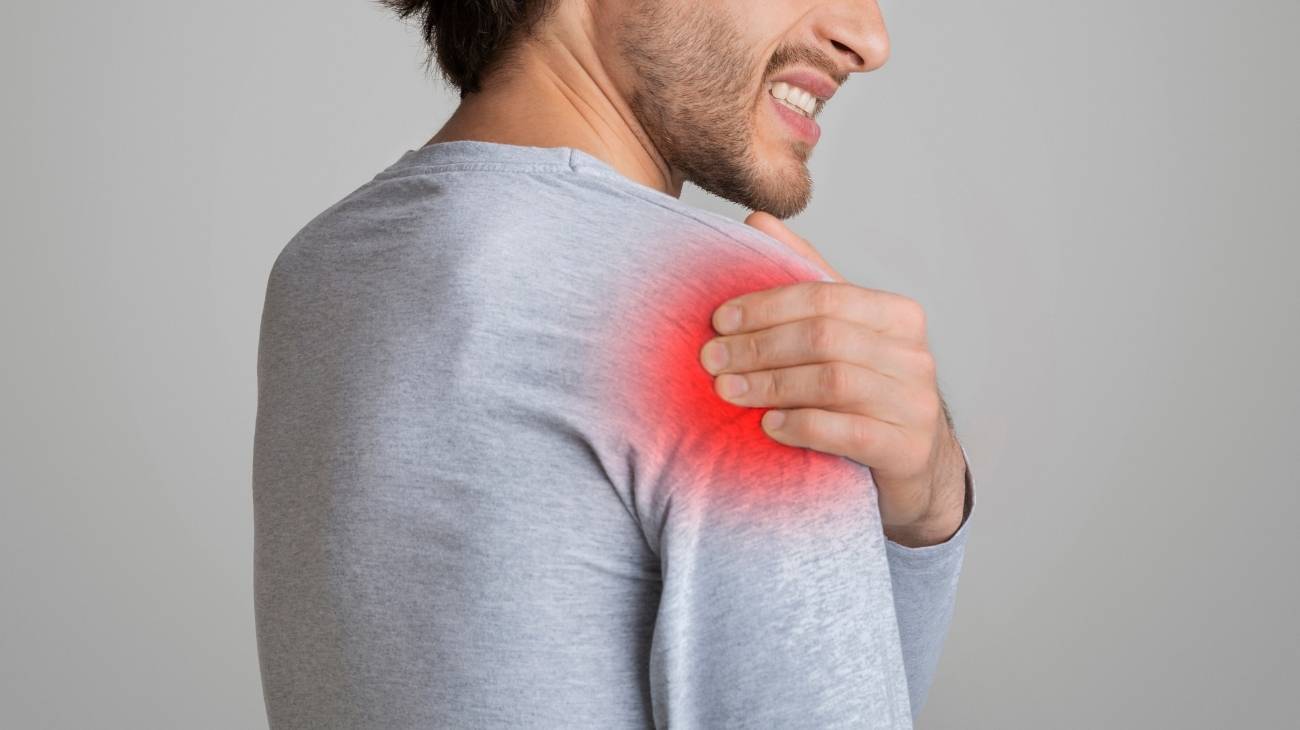- What is retrocalcaneal bursitis of the ankle?
- What are the causes and risk factors for ankle bursitis?
- Best products for ankle bursitis
- Main symptoms that warn us that we have bursitis in the ankles
- What treatments are available to improve the symptoms of ankle bursitis?
- What are the most effective prevention methods for ankle bursitis?
When the retrocalcaneal bursa becomes inflamed, it causes pain in the foot, giving rise to a condition called ankle bursitis. This condition limits the movements of the joint and causes swelling and loss of sensation in the affected area. For this reason, it is advisable to consult a doctor for a diagnosis of the pathology.
To do this, you need to know what retrocalcaneal bursitis is and what are the symptoms and factors that cause it. You will find this information in the following paragraphs, where we will also talk about the treatments that can be applied for the remission of the disease.
What is retrocalcaneal bursitis of the ankle?
The retrocalcaneal bursa is located between the calcaneal bone and the insertion of the Achilles tendon, both located posterior to the foot. This bursa contains synovial fluid to act as a shock absorber for joint movements. If for some reason this bursa receives more fluid or is squeezed, it starts to become inflamed, which causes the condition called retrocalcaneal bursitis.
This type of ailment, which causes muscle stiffness, swelling and a tingling sensation, can disappear within weeks if the patient is treated in time and rests accordingly.
What are the causes and risk factors for ankle bursitis?
Disorders in the ankle joint area that lead to inflammation in the retrocalcaneal bursa can be caused by various factors that increase the likelihood of contracting the disease.
See below what these causes and risk factors are
- Previous trauma: blows to the ankle can cause the joint to become inflamed in the muscle-tendon structure and also in the bursae. This leads to irritation of the synovial bursa, which increases the likelihood of bursitis.
- Infections: Injuries and trauma can cause pathogens to enter the ankle area. This will lead to excess fluid produced by the body itself.
- Rheumatoid arthritis: this degenerative disease like many others (e.g. osteoporosis) causes the soft tissues located in the joint cavity to be affected, thus generating weakness in the ankle bursa.
- Bone deformities: Bone spurs caused by excessive crystals or congenital malformations are likely to cause ankle bursitis. This is due to the linear deviation of the different components of the joint, causing less space for the synovial bursa to lubricate the heel movements correctly.
- Lack of a balanced diet: when people choose to eat foods with excess uric acid, the body may not be able to expel it normally. This causes crystals to form in the joint body, causing the synovial fluid sac to become compressed, which leads to irritation.
- Repetitive and sudden movements: people who repeatedly and violently move the ankle for a prolonged period of time are more likely to develop retrocalcaneal bursitis.
- Obesity: frequent overloading of the ankle worsens the condition of the bursa located in the ankle, which exposes it to constant pressure that can lead to inflammation.
- Inadequate footwear: wearing shoes with high heels where the heel has to make a significant effort to walk causes the tendons and muscles to suffer. This worsens the opening of the joint cavity, creating little space for the bursa.
- Dangerous activities: practising or working in places where the ankle is constantly strained leads to the development of retrocalcaneal bursitis. The excess fluid in the bursa is due to the efforts of the synovial bursa to constantly lubricate the joint.
Best products for ankle bursitis
Bestseller
-
2 Ankle Compression Sleeve (Black/Gray)
$19.95 -
2 Ankle Compression Sleeve (Green/Navy)
$19.95 -
2 Ankle Compression Sleeve (Pink/Bordeaux)
$19.95 -
Ice Pack for Foot - Cold Therapy Socks (Black)
$24.95 -
Ice Pack for Foot - Cold Therapy Socks (Green)
$24.95 -
Ice Pack for Foot - Cold Therapy Socks (Pink)
$24.95 -
Microwavable Heated Slippers (Hearts)
$24.95 -
Microwavable Heated Slippers (Oxford)
$24.95 -
Microwavable Heated Slippers (Sport)
$24.95 -
Microwaveable Heating Pad for Pain Relief (Hearts)
$19.95 -
Microwaveable Heating Pad for Pain Relief (Oxford)
$19.95 -
Microwaveable Heating Pad for Pain Relief (Sport)
$19.95 -
Sport Compression Socks (1 Pair) (Black/Gray)
$19.95 -
Sport Compression Socks (1 Pair) (Green/Navy)
$19.95 -
Sport Compression Socks (1 Pair) (Pink/Bordeaux)
$19.95
Main symptoms that warn us that we have bursitis in the ankles
It is possible to notice the presence of bursitis in the ankles by the presence of symptoms and signs that appear in the affected area. Find out what these signs are:
- Swelling in the joint: this is one of the most common signs that can be found in patients with ankle bursitis. It is caused by excessive accumulation of synovial fluid in the bursa and also by poor blood flow.
- Pain: the type of symptoms are caused by the pressure exerted by the bursa and inflammation of the muscles and tendons on the nerve roots that pass through the affected area. In this way the patient may feel mild pain, but as the days go by the pain increases.
- Redness and increased temperature: due to poor blood circulation in the area, the person may feel a higher temperature to the touch than the rest of the body. In addition, this is accompanied by reddening of the skin over the whole area.
- Muscle stiffness: Numbness is another common symptom of ankle bursitis. This is due to the lack of range of motion in the joint caused by the inflammation of the retrocalcaneal bursa.
- Paresthesia: the sensation of tingling is also a symptom to take into account when determining the presence of bursitis in the synovial bursae of the ankles.
- Lack of sensitivity: as the whole area is inflamed, the brain sends out signals so that the joint does not feel so much pain. For this reason, when you pass your hand over the area, you may feel less sensation.
- Nodules: If the retrocalcaneal synovial sac contains more fluid than normal, lumps are likely to appear under the skin, which can lead to irritation of the joint area.
- Muscle fatigue: loss of strength in the ankle may be caused by lack of movement in the joint due to swelling in the bursa.
What treatments are available to improve the symptoms of ankle bursitis?
There are different treatments that a person diagnosed with ankle bursitis can undergo. We will show you below which techniques are currently the most commonly used.
Alternative and complementary therapies
Find out which complementary and alternative treatments can be applied to help improve the symptoms of ankle bursitis
- Heat and cold therapy: This therapy aims to benefit from the advantages of heat and cold. For this, ice gel packs, electric blankets and any other product that can radiate these extreme temperatures are applied. It should be noted that this treatment must be supervised by a doctor to avoid injury to the skin near the ankle. When applied to the retrocalcaneal bursa, the area of inflammation begins to decrease, allowing the subcutaneous synovial fluid sac of the calcaneus to have greater amplitude. It also results in better elongation of the Achilles tendon.
- Compression therapy: The aim of this therapy is to immobilise the ankle so that the body of the joint is aligned and can work properly again. This will improve the space that the retrocalcaneal bursa should have, allowing the synovial fluid to decrease, which will help to reduce inflammation in the area. To implement this complementary treatment, ankle braces, supports and elastic bandages should be used to achieve rigidity without over-tightening or loosening the capillary walls.
- Thermotherapy: the implementation of heat therapy brings great benefits that can be applied to the ankle area. This aims to improve the network of blood vessels consisting of the venules with the arterioles so that the bloodstream flows better. In this way, the tissues located in the affected area can recover and therefore have a greater opening, which reduces the pressure exerted on the bursa. This is why, with thermotherapy, greater movement is achieved in the joint and the symptoms of pain and swelling are reduced.
- Natural remedies using plants: there are plants with anti-inflammatory and analgesic properties that help to reduce the symptoms of bursitis in the ankle. To implement this therapy it is necessary to consult a doctor beforehand to avoid gastric and hepatic lesions. Among the plants most commonly used for infusion or aromatherapy are rosemary, sage, laurel and mint.
- Healthy lifestyle habits: Patient re-education is a complementary therapy that helps the other traditional treatments to combat the symptoms of retrocalcaneal bursitis. The technique consists of teaching the patient about the risk factors that can lead to re-irritation of the bursa. This must go hand in hand with raising the person's awareness of safe activity. For this reason, aspects related to exercise, diet, posture and rest are included in this treatment.
Dietary supplements
To improve muscle strengthening and reduce tension on the tendons so that the ankle bursa has more room to absorb shock during movement, it is possible to use dietary supplements to help the patient absorb favourable nutrients.
Among the most common are vitamin D, B group, magnesium, chondroitin sulphate, selenium and other minerals. Dosage is the responsibility of the physician and the patient may choose to take these supplements in the form of powders, pills or liquids.
Physiotherapy treatments
Through the use of electrotherapy, hydrotherapy and ultrasound, among other techniques, it is possible to reduce the symptoms of retrocalcaneal bursitis. This is done by stimulating the muscles, tendons and nerves in the ankle area, thus opening up the joint cavity so that the synovial sacs are decompressed and do not have so much physical pressure.
Medications
Medications used for retrocalcaneal bursitis are based on opioid analgesics, such as paracetamol. These drugs do not have significant side effects in the short term, but care must be taken, as adverse symptoms may develop over time. Nonsteroidal anti-inflammatory drugs are also used, and in cases of joint infection, injectable antibiotics may be used.
It must be borne in mind that drug therapy must be recommended by the doctor, since it is the doctor who doses the quantities and establishes the duration of treatment. For this reason, self-medication can lead to very serious complications with the progression of the disease and the appearance of other symptoms.
Surgery and fluid removal
Only in cases where the disease has progressed and it is not possible to deflate the bursa with traditional treatments is it necessary to resort to the extraction of liquid by means of needles that are placed directly into the synovial bursa.
This slightly more invasive method has positive effects in the short term, but recovery takes longer. If this does not work, bursectomy is also possible. This surgical method consists of removing the bursae from the ankle.
What are the most effective prevention methods for ankle bursitis?
Here are the most effective ankle bursitis prevention methods you should take into account to avoid the onset of ankle bursitis:
- Avoid being overweight: ankle bursitis often occurs when the pressure on the retrocalcaneal bursa is constant. This arises because of too little space in the joint due to the excessive weight of the body.
- Keep good posture in mind: it is necessary that when you have to lift heavy things, play sports or climb stairs, you should do it in the correct way, leaning your weight on both sides of your body. This will prevent joint injuries.
- Eat healthy: a balanced diet will help you to incorporate vitamin D and B complex, among other components, into your body. This will help keep the muscles and tendons of the ankle in perfect condition, which will prevent excess synovial fluid with the bursa.
- Warm up: if you are an athlete or work in places where the ankle must be stressed, it is necessary to stretch the muscles and warm up the joint area to avoid injury.
- Rest the joint: whether you perform an over-demanding task on the ankle or practice a sport where you have to walk on hard surfaces, it is advisable to rest the joint so that it relaxes and does not cause muscle tension. This will lead to inflammation of the bursa.
- Protect the ankle area: it is important that you take into account the protection of the joint area if you are going to perform tasks that can damage the synovial bursa. This can be done with ankle braces or special bandages that are not too loose or tight.
- Avoid heavy lifting: if you have to lift heavy objects, always try to do it with the correct posture, this will help you to avoid pressure on the bursa, which will prevent it from becoming inflamed.
- Visit the doctor: if you feel discomfort in your ankle or see a small swelling, it is advisable to visit the doctor urgently. This will help you get the disease into remission as soon as possible.
- Wear comfortable shoes: footwear is one of the factors that can lead to injuries in the ankle joint area. For this reason, it is advisable to always wear light footwear that does not squeeze the heel area.
References
- Omey, M. L., & Micheli, L. J. (1999). Foot and ankle problems in the young athlete. Medicine and science in sports and exercise, 31(7 Suppl), S470-86. https://europepmc.org/article/med/10416548
- Naito, M., Matsumoto, T., Chang, S. H., Ikegami, M., Hirose, J., & Tanaka, S. (2017). Recalcitrant lateral premalleolar bursitis of the ankle associated with lateral ankle instability. Case Reports in Orthopedics, 2017. https://www.hindawi.com/journals/crior/2017/4854812/
- Hunt, T. A. (1955). Bursitis in miners' ankles: the beat ankle and allied conditions in miners' ankles. Occupational Medicine, 4(4), 122-124. https://citeseerx.ist.psu.edu/document?repid=rep1&type=pdf&doi=4940b51b3ec4b2334e1921495590fcd204f90e18
- Olivieri, I., Barozzi, L., Padula, A., De Matteis, M., Pierro, A., Cantini, F., ... & Pavlica, P. (1998). Retrocalcaneal bursitis in spondyloarthropathy: assessment by ultrasonography and magnetic resonance imaging. The journal of Rheumatology, 25(7), 1352-1357. https://europepmc.org/article/med/9676768
- Angermann, P. (1990). Chronic retrocalcaneal bursitis treated by resection of the calcaneus. Foot & ankle, 10(5), 285-287. https://journals.sagepub.com/doi/abs/10.1177/107110079001000508
- Lustenberger, D. P., Ng, V. Y., Best, T. M., & Ellis, T. J. (2011). Efficacy of treatment of trochanteric bursitis: a systematic review. Clinical journal of sport medicine: official journal of the Canadian Academy of Sport Medicine, 21(5), 447. https://www.ncbi.nlm.nih.gov/pmc/articles/PMC3689218/
- Baumbach, S. F., Lobo, C. M., Badyine, I., Mutschler, W., & Kanz, K. G. (2014). Prepatellar and olecranon bursitis: literature review and development of a treatment algorithm. Archives of orthopaedic and trauma surgery, 134, 359-370. https://link.springer.com/article/10.1007/s00402-013-1882-7
- Aaron, D. L., Patel, A., Kayiaros, S., & Calfee, R. (2011). Four common types of bursitis: diagnosis and management. JAAOS-Journal of the American Academy of Orthopaedic Surgeons, 19(6), 359-367. https://journals.lww.com/jaaos/Abstract/2011/06000/Four_Common_Types_of_Bursitis__Diagnosis_and.6.aspx
- Shbeeb, M. I., & Matteson, E. L. (1996, June). Trochanteric bursitis (greater trochanter pain syndrome). In Mayo Clinic Proceedings (Vol. 71, No. 6, pp. 565-569). Elsevier. https://www.sciencedirect.com/science/article/abs/pii/S002561961164113X
- Alvarez-Nemegyei, J., & Canoso, J. J. (2004). Evidence-based soft tissue rheumatology IV: anserine bursitis. JCR: Journal of Clinical Rheumatology, 10(4), 205-206. https://journals.lww.com/jclinrheum/Abstract/2004/08000/Evidence_Based_Soft_Tissue_Rheumatology_IV_.7.aspx














